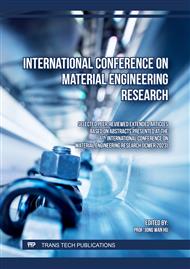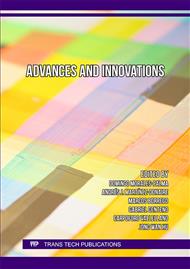p.97
p.107
p.113
p.123
p.135
p.143
p.151
p.159
p.165
Numerical Process Analysis of Forming Semi-Finished Hybrid Parts
Abstract:
Increasing demands on component functionality and weight, but also on the use of resources and cost-effectiveness, are leading to the increased use of hybrid components. The combination of diverse materials enables the use of positive properties of the individual material in one component. With regard to the production of hybrid components, the use of hybrid pre-joined semi-finished parts simplifies the joining process, as simple geometries can be used. A well-established process for joining dissimilar materials such as steel and aluminium is rotary friction welding. However, steel and aluminium form brittle intermetallic phases in the joining zone due to their low solubility. Therefore, in addition to the advantages, the use of pre-joined hybrid semi-finished parts also pose new challenges for the following process chain. As a result of thermomechanical stresses during forming, local failure of the joining zone may occur. Due to its small thickness and position within the component, the analysis of the joining zone is only possible by complex destructive testing methods. FE simulation therefore offers an efficient way to design and analyse forming processes for hybrid semi-finished parts, the development of damage in the process design and to reduce damage by process modifications. Therefore, within this study a numerical model of the forming process chain is developed considering inductive heating, transfer and forming. For a realistic description the flow behaviour of the monolithic materials as well as the bonding strength of the pre-joined semi-finished parts is determined in experimental tests. Based on the experiments a damage model is calibrated and used for the analysis of different process variants of hollow forward extrusion of pre-joined hybrid semi-finished parts of steel and aluminium.
Info:
Periodical:
Pages:
135-142
Citation:
Online since:
October 2023
Authors:
Price:
Сopyright:
© 2023 Trans Tech Publications Ltd. All Rights Reserved
Share:
Citation:



